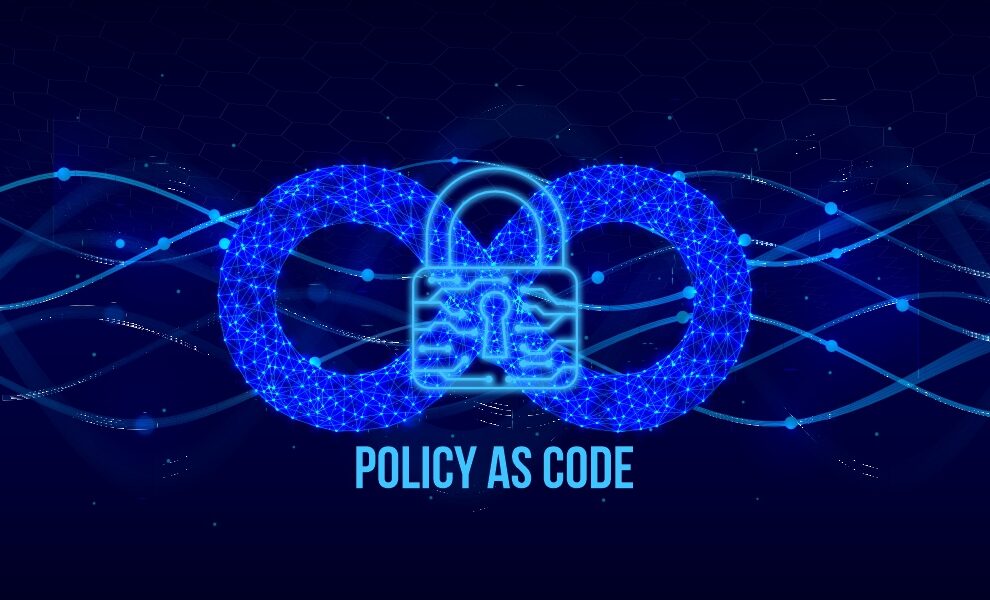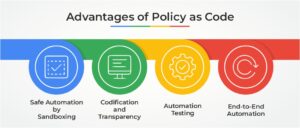Automation has become a cornerstone for businesses. Manual work, in fact, is a lengthy process and is prone to human error. Do you know from which perspective we are talking about? Yes! We’re relating to the coding landscape. Policy as Code (PaC) has become an important practice wherein organizations can define, implement, and administer policies by using code.
Converting text-Automation of traditional text-based policies by converting them into automated logic and executable rules allows teams to maintain speed, consistency, and strategic compliance throughout the infrastructure. In this blog, we’ll explore the exact context of Policy as Code (PaC), its benefits, use cases, and more.
Without any further ado, let’s begin!
Knowing Policy as Code in Detail
Policy as Code (PaC) is a recent method of policy management where rules, compliance requirements, and best practices are represented as machine-readable code. Companies primarily document their policies in YAML, Python, or Rego, rather than using static documents or PDFs.
This code-based model places policy generation much nearer to team development and operation, reducing the effort involved in moving left and integrating compliance into the development cycle. It means that all departments, configurations, and processes are automatically applied to meet specific security and government requirements.
Essential Policy as Code Advantages
Safe Automation by Sandboxing
With the rapid increase in automation, there is a need for safety. Policy Code offers guardrails that ensure a system involving automated systems does not take risky or non-compliant actions in real time.
Codification and Transparency
Policies are written transparently, versioned, and visible and traceable. With the help of tribal knowledge, team members can easily make comments, review, and update policies.
Automation Testing
Policy syntax and behavior can be validated through the testing frameworks and integrated into CI/CD workflows. This ensures that any policy changes maintain the expected system behavior before deployment.
End-to-End Automation
As policies are text-based code, they can be deployed, tested, and enforced in environments automatically without the need to hand-configure them.
How to Get Started with Policy Code?
Policy as a code is basically a structured process for defining, codifying, and automating policies. Check out the steps given below:
1] Define and Codify Policies
Cross-functional teams are primarily responsible for compliance, configuration, and security requirements. After completion of this, they code them with tools such as Open Policy Agent (OPA), or Selefra. These tools assess three main elements: policy code, data, and query inputs. In this manner, compliance is checked and enforced.
2] Automate and Test Policies
Then, you need to install configured policies through the stack, including networks and storage. Alongside, the CI/CD pipelines use PaC tools. Constant testing provides consistency and helps avoid drifting between desired and actual settings.
3] Create and Implement Security Code
With policies integrated into their workflows, the DevSecOps team can create and deploy software with confidence that all operations, including provisioning cloud resources and configuring firewall settings, adhere to established rules.
4] Automated Scanning of Violations
PaC tools continually scan infrastructure and code that could lead to policy violations. If there is any issue, they produce reports in JSON format that show the compliance status and remediation actions.
5] Resolve and Roll Out Updates
In the event of violations, the engineering teams are notified to correct and deploy the necessary corrections. After corrections are done, the updates are implemented safely, ensuring constant compliance and effectiveness of operations.
A Look at the Key Use Cases and Examples
- Policy as Code enables the implementation of encryption policies, role-based access control (RBAC), and secure settings. It makes sure that all the environments are released with similar security measures.
- Valuables such as Puppet or Chef combine PaC into CI/CD pipelines to make sure that they adhere to standards such as PCI DSS, HIPAA, SOX, DISA STIG, and CIS Benchmarks. Every deployment will be automatically checked against specified compliance rules.
- PaC establishes and implements cloud policies in a multi-cloud environment or hybrid settings to ensure that the infrastructure does not become misconfigured, cost optimization is achieved, and the standard of infrastructure is kept constant.
Policy as Code Vs Infrastructure as Code (IaC)
Whereas Infrastructure as Code (IaC) is an attempt to automate provisioning of infrastructure, Policy as Code is an attempt to regulate how said infrastructure should behave. They form a strong combination for creating and maintaining your environment with IaC, ensuring it remains compliant, secure, and consistent with PaC.
Wrapping it Up!
Policy as Code delivers the disconnect between security, compliance, and agility. Organizations can develop a scalable, auditable, and secure operation framework by codifying policies and automating their enforcement.
At a time of automation that dictates not only infrastructure but also application delivery, PaC is a means of ensuring compliance and improving security. The adoption of Policy as Code is not a technical upgrade; it is a strategic change to more intelligent, safer, and efficient IT governance.
Do check out our blog section for more trending blog topics!
FAQs
1. What is the format of Policy as Code?
Ans: Policy as Code is written in machine-readable languages such as YAML, JSON, or similar in declarative configuration file formats.
2. Which are the tools for Policy as Code?
Ans: Some of the popular tools for Policy as Code are Cedar Policy Language (CPL), Terraform, and AWS Config Rules.
Recommended For You:
How Low-Code and No-Code Platforms Are Changing Software Development



